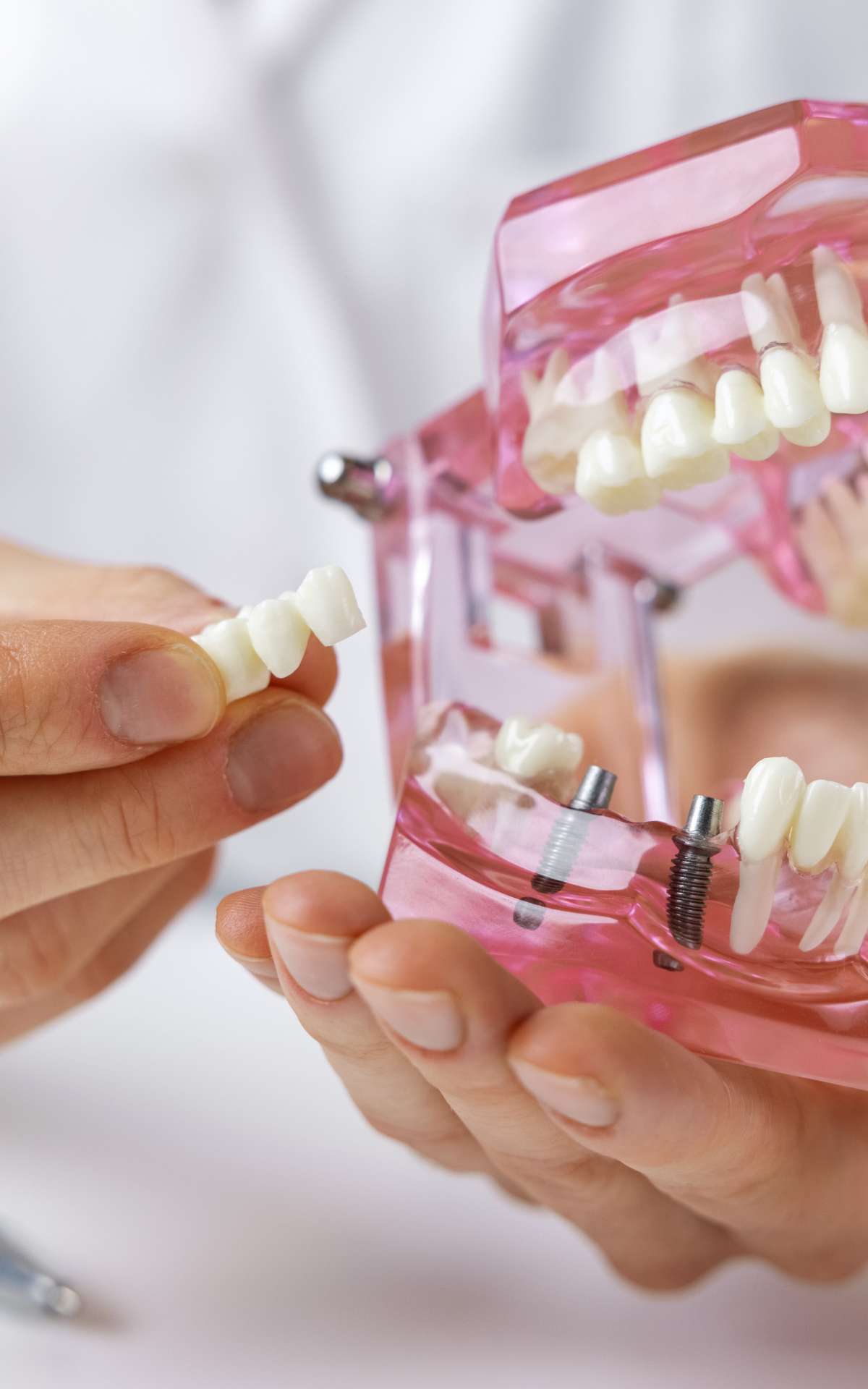Dental Bridge
Make an Appointment
Online Schedule
IntroductionWhat is Dental Bridge?
Dental bridges are made to fill the space left by a missing tooth or teeth. In most cases, zirconium- and metal-supported porcelain are the materials used to create bridge teeth.
Types of Dental Bridges
Traditional Dental Bridge:
Crowns are used to create traditional dental bridges on both sides of the gapped tooth. It is the most typical kind of bridge.
Maryland Dental Bridges:
The Maryland bridge, sometimes referred to as the winged bridge, is a procedure that doesn’t involve extracting teeth. Instead of dental crowns, as with conventional bridges, a framework made of metal or porcelain that is bonded to the back sides of the abutment teeth is used. Since the Maryland bridge is less reliable than other bridges, it is a less popular technique.
Implant Dental Bridges:
In situations when the adjacent tooth needed to support the bridge is missing from the mouth, the implant bridge tooth is used in its place.
Cantilever Bridges:
Cantilever bridges are used when there is only one adjacent tooth next to the missing tooth or teeth. It is the least preferred bridge type.

IntroductionDENTAL BRIDGE APPLICATION PROCEDURE
A dental exam is carried out with panoramic x-rays in order to repair the cavities in the mouth with bridge teeth. The patient’s history is listened to during the initial examination, and the operation to be done is thoroughly explained to the patient. Once the crown fits well to create a bridge tooth, the teeth are cut under a light anesthetic. To avoid the reduced teeth projecting a negative image and increasing sensitivity, a temporary tooth is implanted after a dental imprint is obtained with impression cement. The harmony and color of the bridge tooth with the cut teeth are practiced during the second session scheduled for the placement of the bridge tooth, which will be made in accordance with the measurements taken. With the consent of the patients, the bridge tooth is affixed after the rehearsal.
Advantages of Dental Bridges
Dental bridges have a lot of benefits. First and foremost, it is a practical and helpful replacement for a lost tooth or teeth that causes patients discomfort. Patients can chew normally after applying bridges because they help with mastication. Bridges also boost self-confidence by giving off a more attractive appearance.
Disadvantages of Dental Bridges
Dental bridges have a limited number of drawbacks. First, the tooth that holds the pontic, the abutment tooth adjacent to the lost tooth, may be harmed. Additionally, if the crown is not properly fitted, it’s possible to see bacteria or plaque under the bridge. However, these issues can be avoided with good dental hygiene both before and after the treatment.
How Long Can Dental Bridges Last?
The person’s attention to dental care and diet can also affect how long bridge teeth last. Depending on the individual, the bridge tooth, which typically lasts 10 to 15 years, may last 20 to 25 years.







